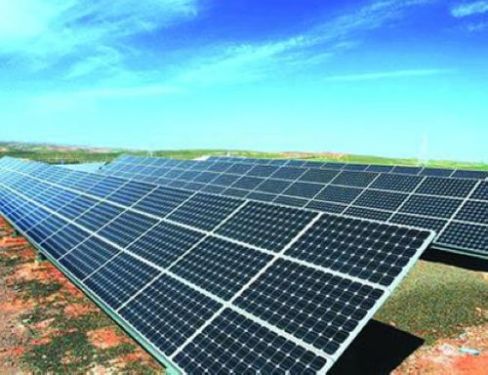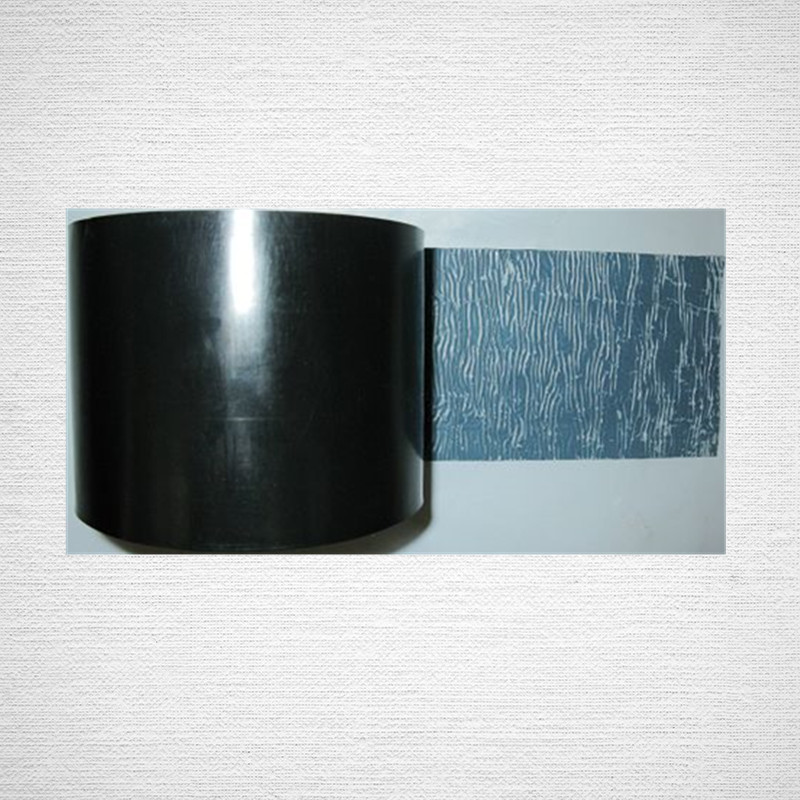New Photovoltaic Regulatory Commission: Conversion Efficiency
 In order to standardize and promote the healthy development of the photovoltaic industry, the "State Council's Several Opinions on Promoting the Healthy Development of the Photovoltaic Industry" (hereinafter referred to as "Opinions") was formally introduced. This document, which allowed the industry to make up for a long period of time, has attracted heated attention and discussions from various quarters, and the focus has been on issues such as development goals, conversion efficiency, and follow-up rules.
In order to standardize and promote the healthy development of the photovoltaic industry, the "State Council's Several Opinions on Promoting the Healthy Development of the Photovoltaic Industry" (hereinafter referred to as "Opinions") was formally introduced. This document, which allowed the industry to make up for a long period of time, has attracted heated attention and discussions from various quarters, and the focus has been on issues such as development goals, conversion efficiency, and follow-up rules. Development goals will be raised again
The development goals in the "Opinions" suggest that from 2013 to 2015, the annual average installed capacity of new photovoltaic power generation will be around 10 GW, and the total installed capacity will reach 35 GW or more by 2015. This is the fourth time this target has been raised and the growth rate has increased. Compared to the previous 21GW, it reached 66%. For this reason, there are views in the industry that such a large increase in the installed target may be only a political decision to deal with the European trade war, and may be affected by the results of the negotiations with the European Union. If the European Union finally decided not to implement the "double opposition" in December, then The development of domestic photovoltaic applications may slow down again. From this point of view, several experts quoted the “China Electronics News†reporter and quoted the original “Opinions†for a strong response: “The photovoltaic industry is an important development direction for the global energy science and technology and industry, and it is a sunrise industry with great potential for development. , It is also a strategic emerging industry with international competitive advantages ... to strengthen confidence, seize opportunities, explore new ideas, and unswervingly promote the sustainable and healthy development of the photovoltaic industry. At the same time, for the current domestic specific situation, TrendForce green energy business Department analyst Huang Gonghui said that based on preliminary planning, the 35GW goal can be broken down to 6GW this year, 10GW in 2014 and 12GW in 2015. With the support of specific policies, pressure is there, but not counted. Too big.
The explosive growth in the scale of distributed photovoltaic power plants will share a large share of the task. The reporter found that the "Opinions" clearly stated that all the electricity generated by distributed photovoltaic power generation will serve as a performance assessment indicator for local governments, and will also be included in the amount of local government energy conservation. “Before and after the “Opinions†were issued, the provincial policies supporting distributed photovoltaic power generation have been advanced or brewed.†Deputy Director, Ministry of Industry and Information Technology, Center for Computer and Microelectronics Development (China Software Testing Center), Deputy Secretary of China Photovoltaic Industry Alliance Chang Gaohongling told the “China Electronics News†reporter that “Zhejiang (Jiaxing) and Jiangxi (Wanjia Rooftop Photovoltaic Demonstration Project) and other provincial policies have been introduced, and Guangdong and other provinces’ policies are brewing. It is expected that the distribution will be introduced later. There are more provinces and municipalities that use specific supportive policies and measures.†Gao Hongling further stated that the construction of distributed photovoltaic power plants will show a variety of explosive developments, not only in the diversity of applied themes, but also in the diversification of application methods. .
Conversion efficiency
In order to speed up industrial restructuring and technological progress and inhibit the blind expansion of photovoltaic production capacity, the Opinions proposes to strictly control the newly expanded polysilicon, photovoltaic cell and component projects with only simple expansion of production capacity. The new photovoltaic manufacturing project should meet the requirement of monocrystalline silicon photovoltaic cell conversion efficiency. Below 20%, the conversion efficiency of polysilicon photovoltaic cells is not less than 18%, and the conversion efficiency of thin film photovoltaic cells is not less than 12%. Such high conversion efficiency limits "throw" many people in the industry. Some companies stated that this goal is very stressful for the current domestic PV companies; some even exclaimed that this is an impossible goal. It is true that from the publicly disclosed information, the conversion efficiency of Yingli Panda's N-type monocrystalline silicon battery with the highest domestic mass production efficiency is only 19.5%, and it has not yet reached the 20% pass line. The requirement for 18% production efficiency of polysilicon batteries is currently only one company can do. Therefore, some people jokingly called this a "shooting head" decision. To this end, the "China Electronics News" reporter called a number of leading domestic companies in charge of battery technology. Regarding everyone’s concerns, the responsible officials all clearly stated that: “The “consultation†requires conversion efficiency, and currently several mainstream companies in China can do it completely.†Before the reporter asked, why not pursue the highest conversion efficiency? A company official told reporters that this is based on cost-effective considerations. He analyzed that the single crystal conversion efficiencies of US SunPower and Sanyo, Japan are more than 20%, but their cost per watt is about US$1.3, while the cost of domestic mainstream companies is only US$0.7/W; if more than 20%, they can By adjusting the product design structure and increasing the use of some parts, it is not difficult, but this will increase the manufacturing cost by 5% to 10%. It can be seen from this that the requirements of the "Opinions" are not unrealistic. The relatively low conversion efficiency seems to be a market strategy for leading companies to enhance their product competitiveness. “The explicit limitation of conversion efficiency is based on field surveys conducted by a large number of companies in the relevant departments, and it also seeks multiple opinions. This will not only improve the overall technical level of the industry, but also contribute to the improvement of industrial concentration.†Gao Hongling’s The summary draws a full stop.
Follow-up details
From the executive meeting of the State Council on December 19 last year to the executive meeting of the State Council on June 14 this year, and the introduction of the Opinions, it took more than half a year to promote the healthy development of the photovoltaic industry. From 2011, the entire photovoltaic industry started to decline, and it has now been more than two years since the “Opinions†were only programmatic documents. The actual implementation still depends on supporting documents of various ministries and commissions. Then when will the corresponding supporting measures be followed? When will the tariff be determined? When will the subsidies be made? ** When will the standard be determined? Will it take a long time?
The “China Electronics News†reporter interviewed relevant people with a series of questions in the industry. "Before the end of September this year will be introduced in succession!" The reporter received a very positive reply. The source said that currently the National Development and Reform Commission, the Ministry of Finance, the Ministry of Industry and Information Technology, the Ministry of Housing and Construction, and the General Administration of Quality Supervision, Inspection and Quarantine of the People's Republic of China will issue supporting documents, and individual ministries and commissions have already entered the consultation stage. Among them, the National Development and Reform Commission's Energy Bureau is focusing on application ports, involving distributed photovoltaic power plants, large-scale photovoltaic power plants, and photovoltaic demonstration areas; the Ministry of Industry and Information Technology is focusing on the specification of the photovoltaic industry, and mergers and acquisitions; the Ministry of Housing and Construction focuses on demonstration applications of photovoltaics; the Ministry of Finance will ensure subsidies. The implementation of funds; Development and Reform Commission clearly on-grid price.
The relevant documents are now ready and will follow the "Opinions". In fact, the "Opinions" have clearly stated that all relevant departments should, in accordance with the requirements of this opinion, seize the relevant supporting documents in accordance with the division of responsibilities, improve the photovoltaic power generation price, taxation, financial credit, construction land, and other supporting policies to ensure various tasks and measures. Implement it. As Gao Hongling said, let us jointly look forward to and witness these concrete measures to comprehensively improve the quality of China's photovoltaic industry and promote the long-term healthy and sustainable development of the industry.
The POLYKEN 942&955 System is a multilayer coating system designed for the corrosion protection of pipelines operating in highly corrosive environments and exposed to high mechanical stresses that may be present particularly on large diameter pipes. The system consists of POLYKEN#1027 liquid adhesive,POLYKEN #942 three-ply anti-corrosion inner layer and POLYKEN #955 mechanical outer layer and is fully certified to the DIN 30672 and EN12068 standards. The 3-ply adhesive system produces a strong cohesive bond to the primed steel surface, at the spiral overlap and to the mechanical outer layer. The tough mechanical properties of the outer layer provide protection to the pipes during handling and installation.

Polyken 942 Coating Tape,Rubber Coating Tape,Pipe Coating Tape,Adhesive Tape Coating Tape,Pipe Protection Tape
Jining Qiangke Pipe Anticorrosion Materials CO.,Ltd , http://www.pipe-wrap-tape.com